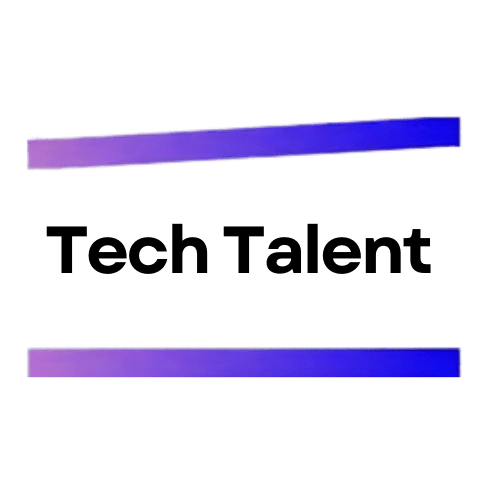Ruby, a programming language that has captured the hearts of software engineers worldwide, has experienced a meteoric rise in popularity. Its appeal stems from its exceptionally readable code, extensive libraries, and a vibrant, supportive community. This surge in popularity has led to a proliferation of Ruby development companies, offering streamlined, scalable, and optimized processes that are increasingly attractive to businesses across various sectors.
Ruby developers are now engaged in a diverse array of projects, spanning e-commerce, web and app development, content management systems, and beyond. If you’re contemplating the integration of Ruby into your next software development venture, this article will provide you with essential insights into the world of Ruby development.
The Essence of Ruby Development
Ruby, conceived in 1993 by Yukihiro Matsumoto, was introduced as a harmonious blend of then-popular programming languages, including Perl, Eiffel, and Ada. Matsumoto’s vision was to create a language that was both simple to comprehend and capable of building complex, scalable applications. It’s safe to say he achieved his goal with flying colors.
Today, Ruby serves as the backbone for a multitude of world-renowned services, including Airbnb, Shopify, Bloomberg, and Zendesk. These industry giants harness Ruby’s full potential to provide stable, scalable, and secure software infrastructure catering to millions of users globally.
The preference for Ruby among companies primarily stems from three key factors: simplicity of development, cost-effectiveness, and optimization potential. Let’s delve deeper into these aspects:
Ruby’s Simplicity: A Developer’s Dream
Ruby was meticulously designed to maintain clarity and readability throughout all stages of development. It employs an English-like syntax and follows an intuitive logic, making the code accessible even to those with limited software development experience. This characteristic enables Ruby developers to achieve more with less code, empowering companies to aim for higher standards in their software solutions.
The simplicity of Ruby extends beyond mere readability. It embraces the principle of “Convention over Configuration” (CoC), which significantly reduces the number of decisions developers need to make without sacrificing flexibility. This approach accelerates development processes and minimizes the likelihood of errors, resulting in more efficient and reliable software production.
Cost-Effectiveness: Ruby’s Open-Source Advantage
Ruby’s open-source nature is one of its standout features. It’s completely free, which means companies can hire developers and access numerous libraries, frameworks, and tools without paying for licenses. This fosters innovation and collaboration, as developers can utilize existing solutions and concentrate on delivering unique project value.
Moreover, Ruby’s design philosophy promotes code reusability and modularity. The “Don’t Repeat Yourself” (DRY) principle, deeply ingrained in Ruby development practices, encourages developers to write efficient, non-redundant code. This not only reduces development time but also simplifies maintenance and updates, leading to long-term cost savings for businesses.
Ruby’s Speed and Optimization Capabilities
Ruby excels in optimization and speed, especially with its leading framework, Ruby on Rails (RoR). RoR significantly reduces development time by more than 30% due to its streamlined codebase, extensive plugin support, and object-oriented approach.
Ruby on Rails (RoR) often achieves tasks in a single line that would take six lines in Java, boosting development speed. This efficiency leads to cleaner, easier-to-manage codebases. Ruby’s dynamic nature supports rapid prototyping and iterative development, helping businesses swiftly adjust to evolving needs and market demands.
Ruby’s Prowess in Backend Development
Ruby has carved out a niche for itself in backend development, and for good reason. The language’s ability to express complex logic in concise, readable code makes it an ideal choice for building robust server-side applications. This efficiency translates to reduced development costs and faster time-to-market for businesses.
Many companies prefer using Ruby to build robust backend infrastructures for their Minimum Viable Products (MVPs). This choice enables them to develop sophisticated systems quickly and cost-effectively compared to alternative tools. Ruby’s flexibility also simplifies software updates and facilitates the addition of new features after launch. This adaptability ensures that applications can grow and adapt to changing business requirements.
Ruby’s vast array of libraries and gems, which are pre-packaged solutions, distinguishes it for backend development. These resources, extensively used and verified by developers globally, encompass crucial backend features. They enable Ruby developers to concentrate on solving specific business challenges instead of redoing established functionalities.
The Ruby on Rails Framework: A Game-Changer
No discussion about Ruby development would be complete without mentioning Ruby on Rails (RoR). While Ruby and RoR are distinct entities, they are often used in tandem, with RoR being the framework of choice for most Ruby development projects.
Released in 2004, RoR is an open-source web application framework that has revolutionized web development. It’s offered under the MIT license, granting almost unlimited reuse and license compatibility. This essentially means it’s free to use, making it an attractive option for businesses of all sizes.
RoR follows the model–view–controller (MVC) software design pattern, which separates an application into three main logical components. This separation of concerns enhances the maintainability and scalability of applications. The framework’s adherence to the CoC and DRY principles further streamlines development, reducing decision-making overhead and code redundancy.
Ruby on Rails (RoR) is renowned for its stability and predictability, making it ideal for long-term projects that are complex and scalable. It serves as a strong base for developing robust web applications. RoR simplifies tasks such as creating database tables, handling migrations, and quickly setting up views, which accelerates application development.
Ruby development, particularly when used with Ruby on Rails, provides a robust and cost-effective solution for today’s software needs. Its simplicity and optimization capabilities, combined with strong community support, make it ideal for businesses aiming to create scalable, maintainable, and feature-rich applications.

Explore TechTalent: Elevate Your Tech Career
Ready to take your interactive walkthrough skills to the next level?
TechTalent offers opportunities to certify your skills, connect with global tech professionals, and explore interactive design and development.
Join today and be part of shaping the future of interactive walkthroughs!
